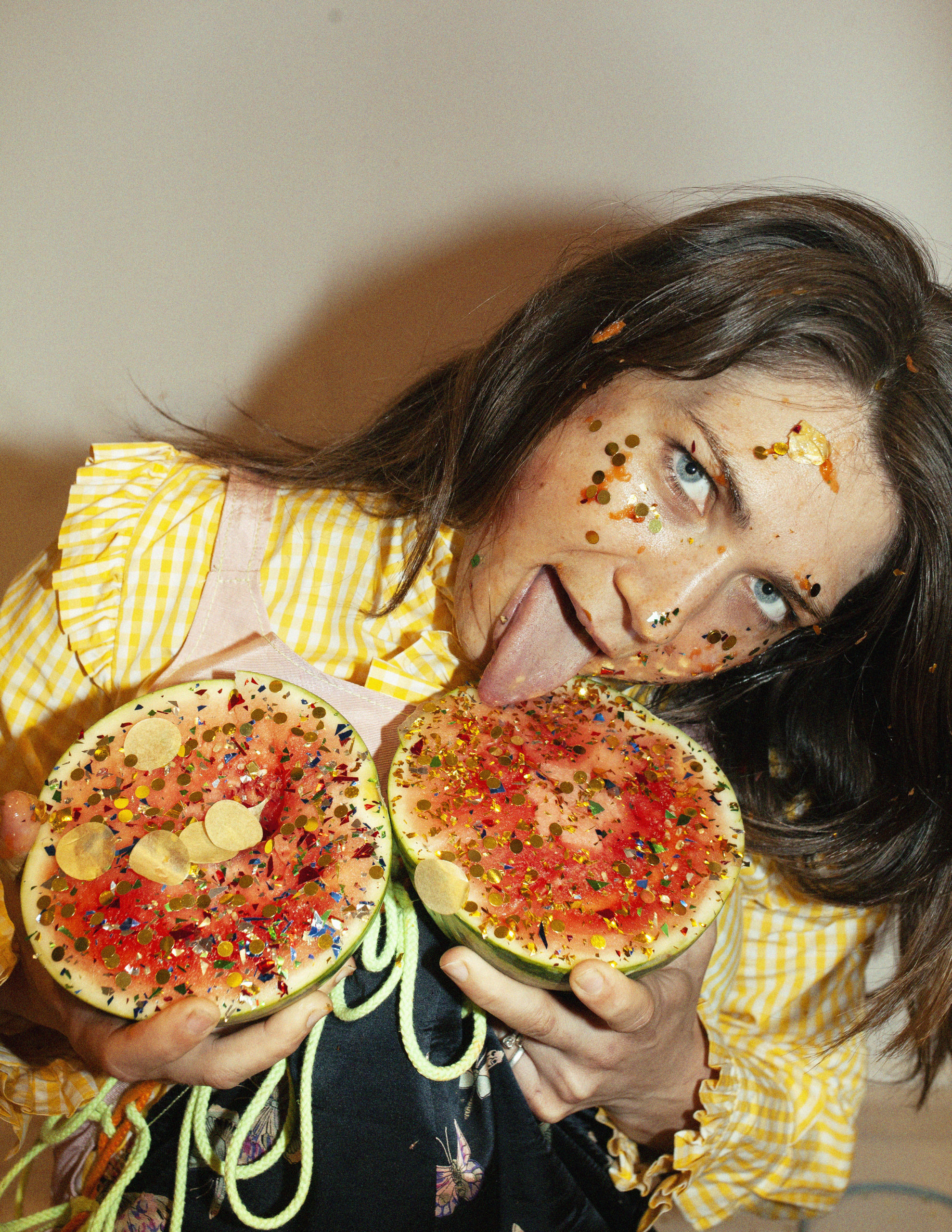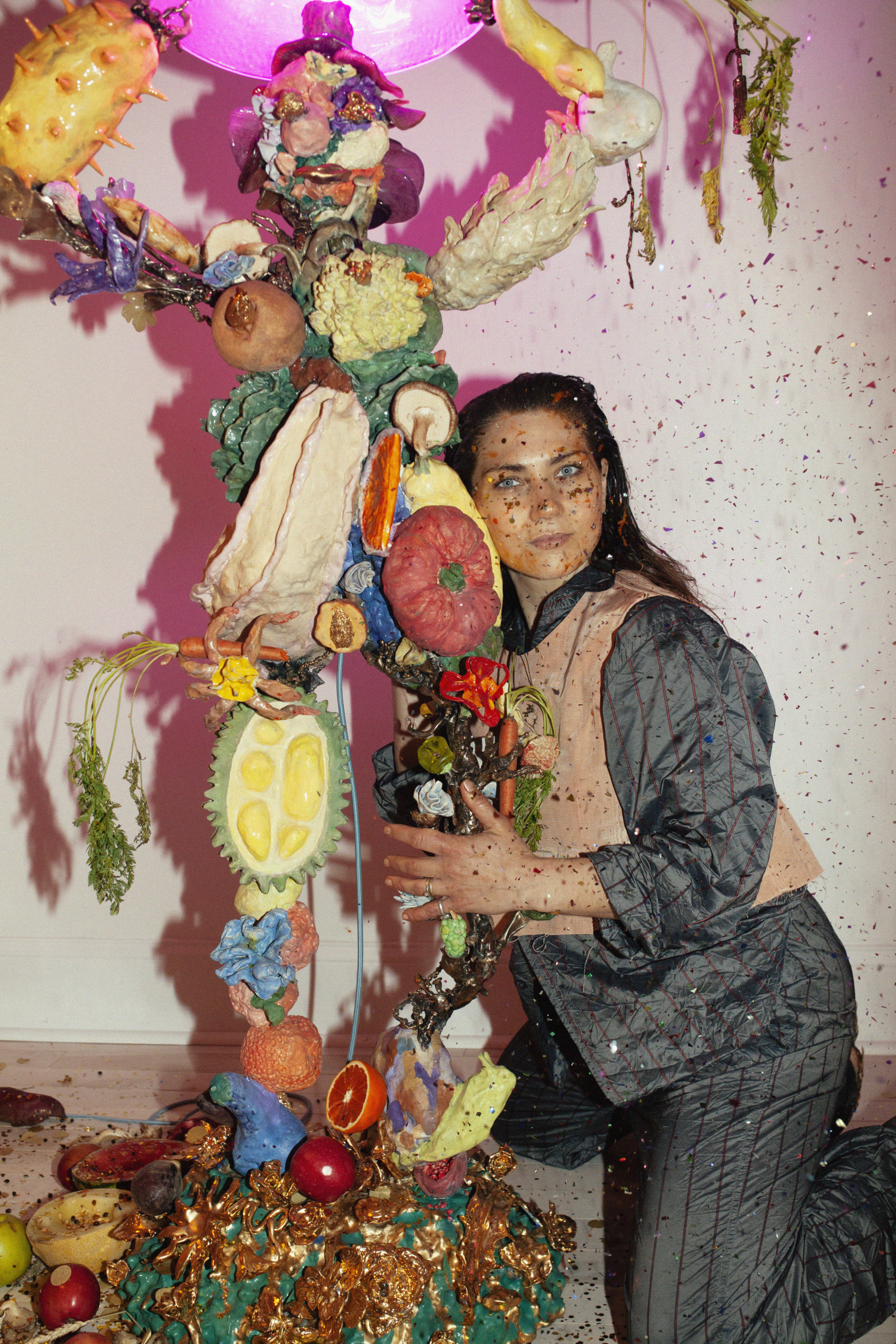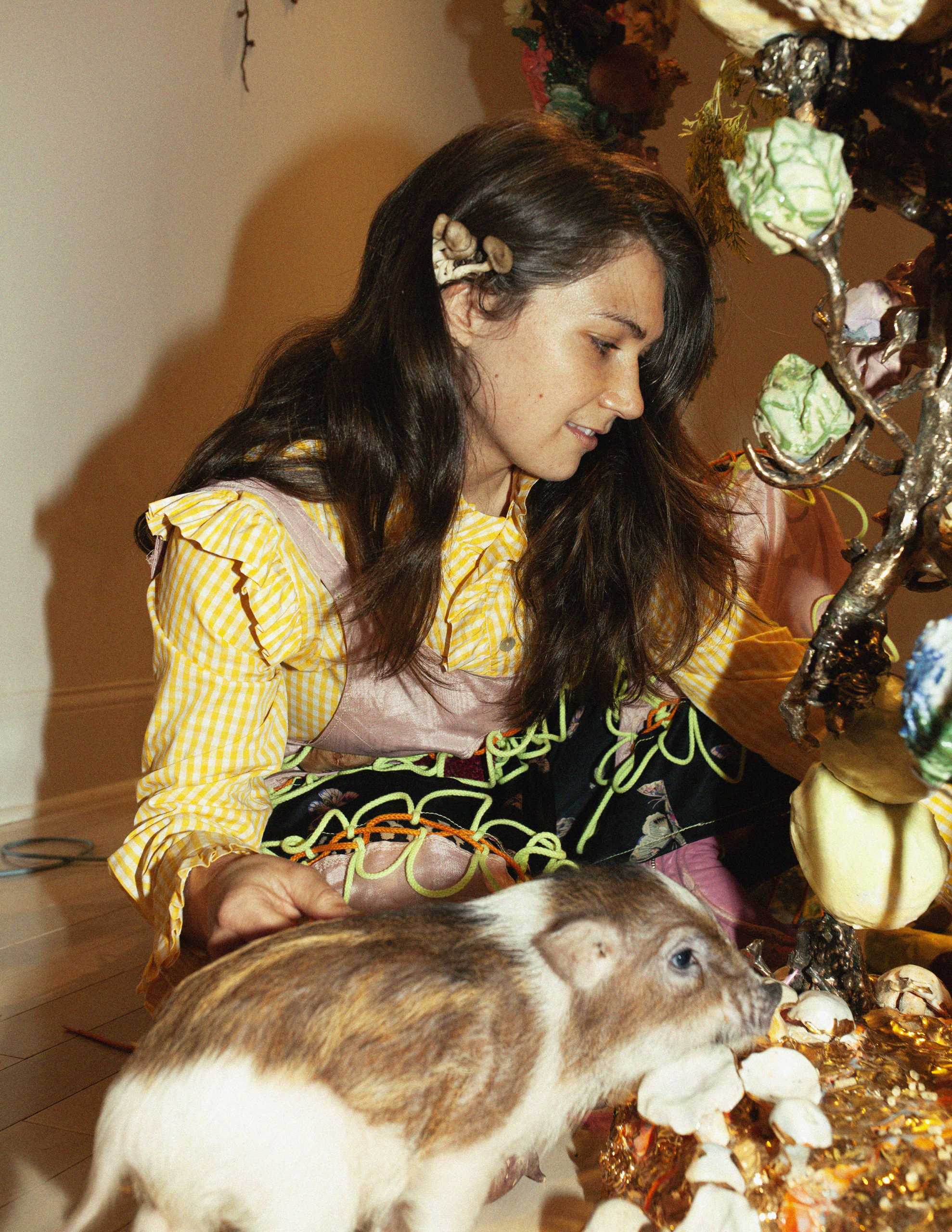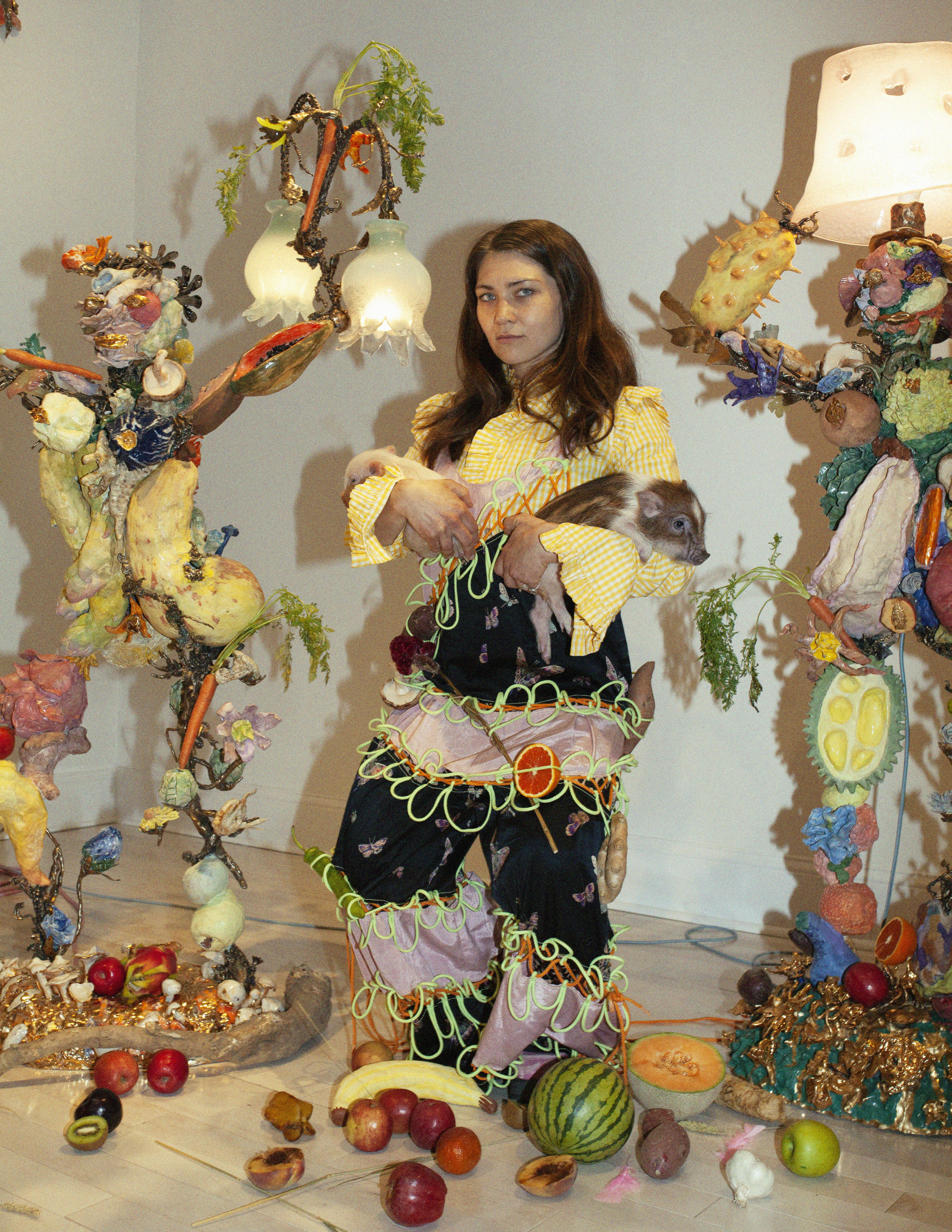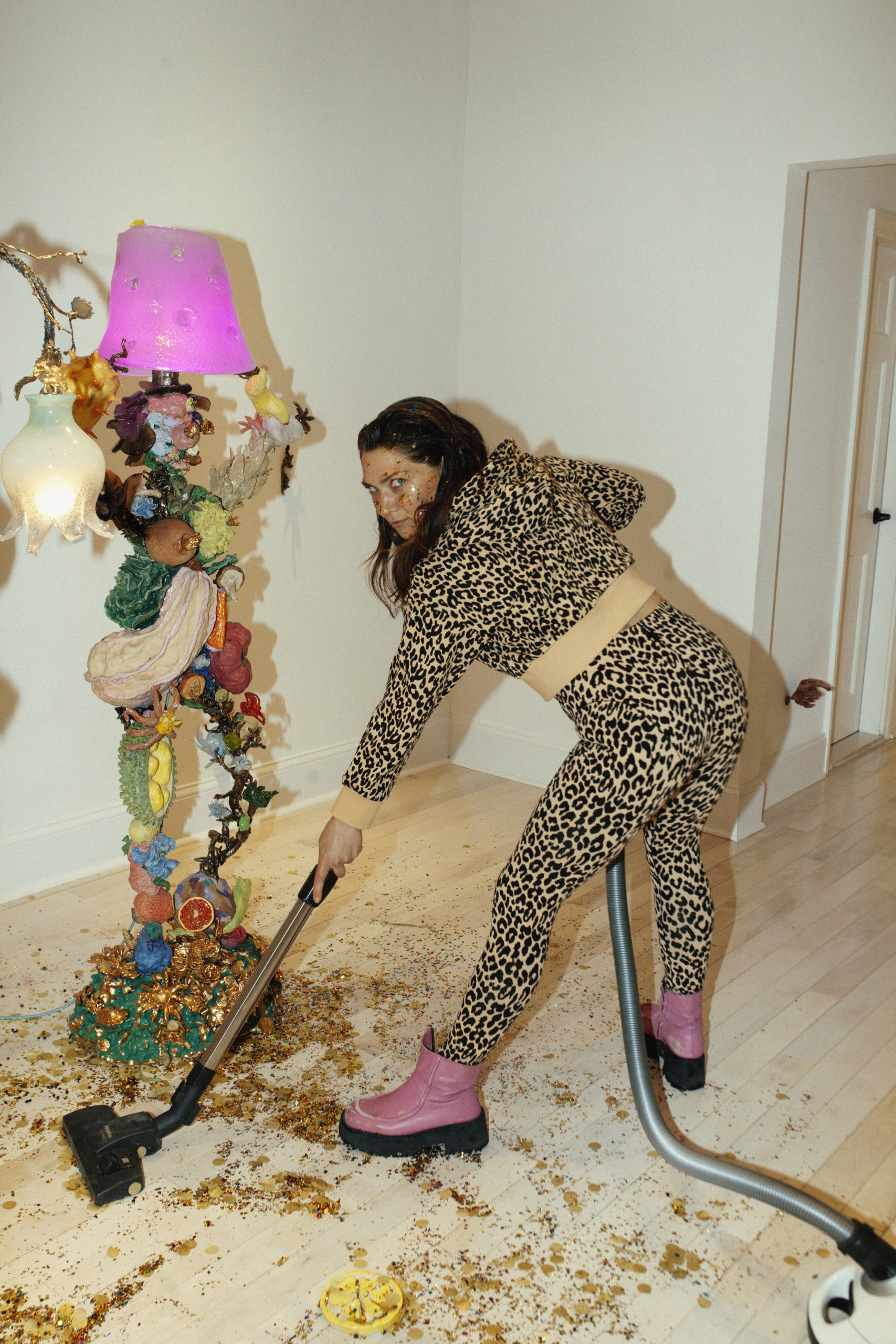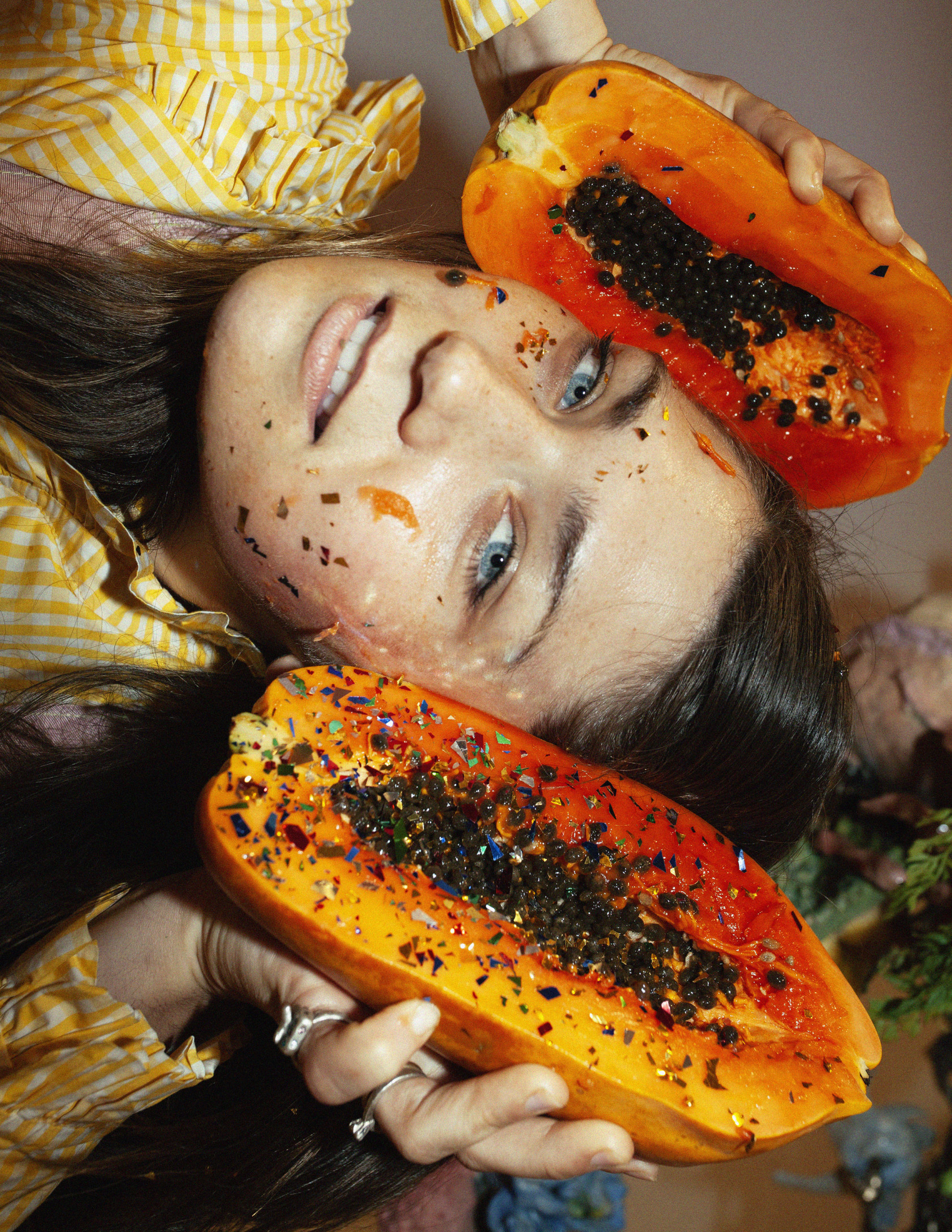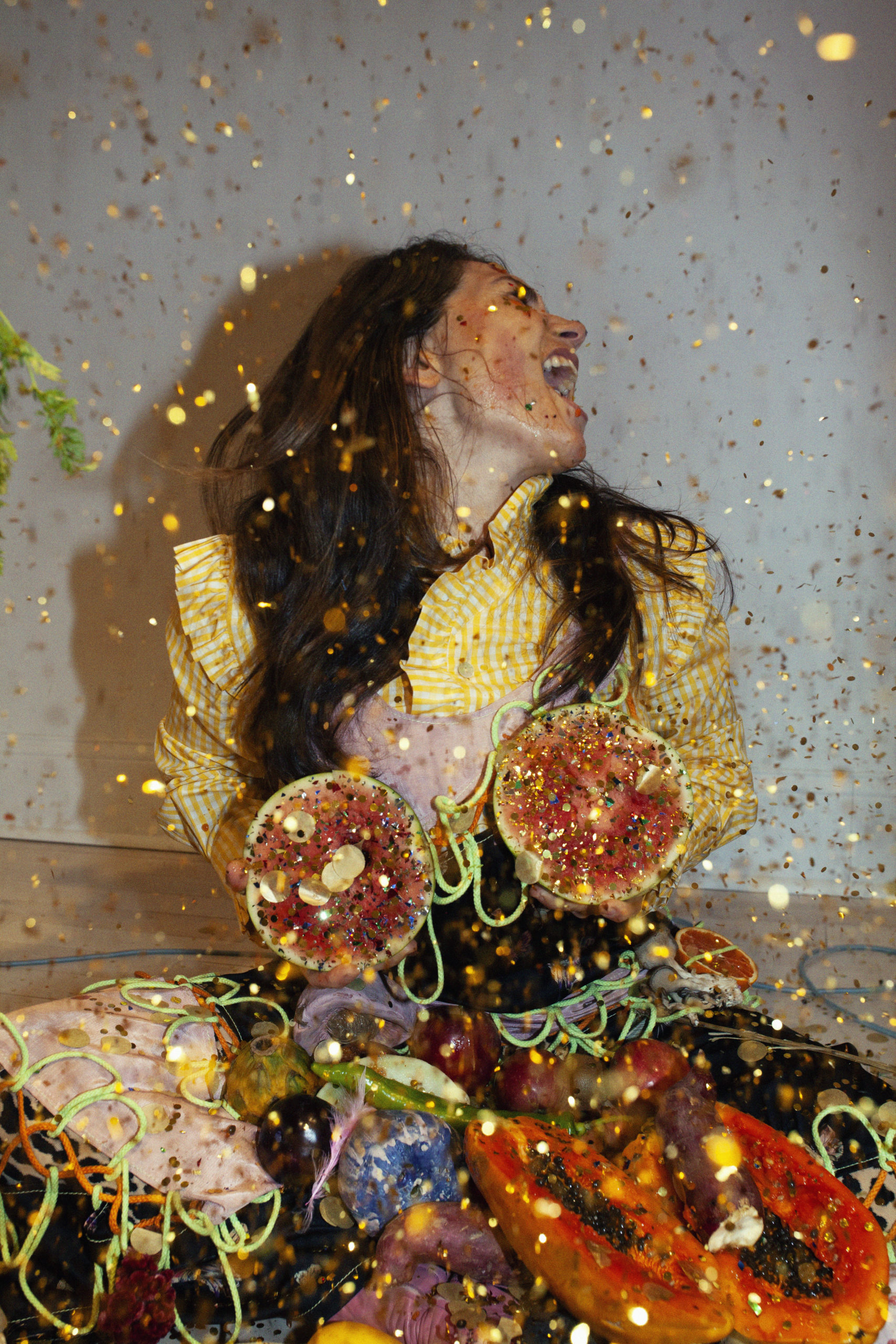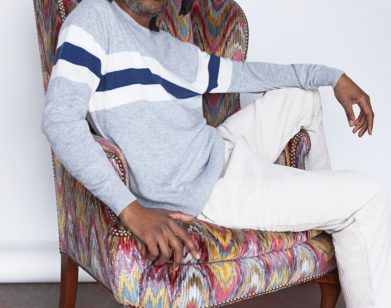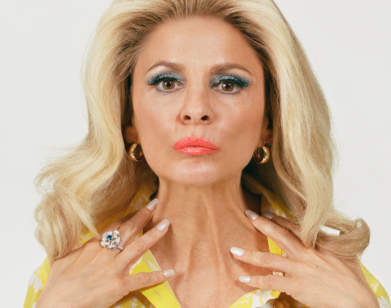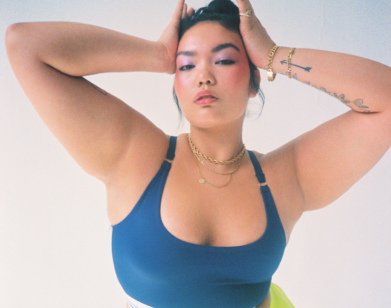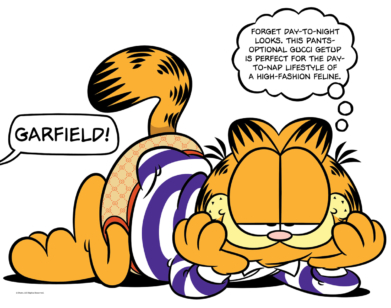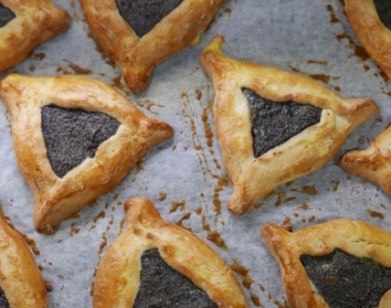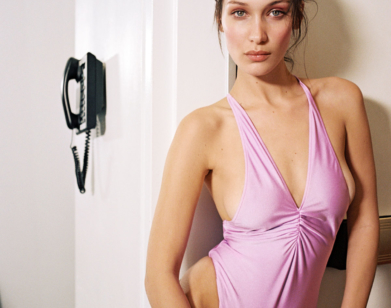IN CONVERSATION
Artist Katie Stout and Designer Adam Selman on the Compulsion to Create Gross Things
Artist Katie Stout is known for collapsing the boundary between design and derangement. Her playful household items—lamps, chairs, mirrors, curtains—double as avant-garde sculpture; she’s described her work as “naive pop.” Case in point: one of her most well-known early works is a side table that resembles cow udders squirting milk. In her latest solo show, Verdant Malformations—which was on view last month at Venus Over Manhattan—she kicks up the unsettling side of her aesthetic even further, with seething, figurative, sculpted lamps and other objects rendered in glass, ceramic, and bronze. They evoke rotting vegetation, but also, regeneration. The fashion designer Adam Selman, a longtime fan of the artist, gave her a call to discuss food, their respective artistic practices, and embracing one’s naughty side. Moo.
———
ADAM SELMAN: What’s your middle name, Katie Stout?
KATIE STOUT: My middle name is Barrett. What’s your middle name, Adam Selman?
SELMAN: It’s Daniel. I like Barrett. It’s like, oh, she’s official.
STOUT: She’s kind of puritanical, I think. I feel like I am both Katie Stout and Katherine Barrett Stout, waffling between this person who wants to make a total mess and be disgusting, and this other person who’s trying be type A, but never can. Does that make sense?
SELMAN: It sounds like a pretty healthy balance to me. I’ve been to your studio. It’s quite tidy.
STOUT: Wait. The old studio? I’m so honored that you thought it was tidy.
SELMAN: As an artist, it’s important to be organized, and I felt like you had a good organization system. I’m excited to talk about your show. I felt very at home with a lot of your pieces, for some reason. What are your obsessions? Do you have things you constantly return to, that make it feel so homey, or is it just happenstance?
STOUT: I’m just obsessed with making things for the home. Recently, I’ve been looking at a lot of decorative art and ornament, and I think it’s partially because it kind of repulses me. I’ve always been drawn to things that are a little gross. I guess it’s pretty evident that I constantly return to lamps, specifically. There’s something really appealing about the space they create, just inherently, by producing light. And I like making things that can be touched and used, and then they get to go live with someone, and a patina is made. But the lamps have these nipple touch switches.
SELMAN: Amazing.
STOUT: So not only do they invite you to touch them, it feels a little naughty.
SELMAN: One of my favorite words. That makes a lot of sense. If you were going to invite one of your creations into your home, it is like having someone there with you all the time, because they are so figurative.
STOUT: Yeah, I feel like having a home where everything feels like a friend is really important. Like all of the objects make every day feel like a little bit of a party. It’s also really funny because a lot of them have ceramic shades, so it’s like, really, how functional are they as lamps?
SELMAN: But these new ones have glass shades.
STOUT: Oh, I stepped it up. I was like, “I’m brilliant. What if I made a lampshade that was translucent? It’s never been done before.”
SELMAN: This show does feel like a step up. There’s a lot to take in.
STOUT: Thank you. The quarantine definitely gave me extra time to obsess. I was like, “I’m going to cast and do glass and do this and do that.” I wanted them to feel like they were seething, like really beautiful, but also kind of grotesque. All of the fruits and vegetables and flowers, I wanted them to feel a little bit rotting, and not to sound cheesy, but resilient also. When something’s rotting, it makes space for something new to grow.
SELMAN: Do you find it’s easier to hear other people talk about your work first, and then you’re like, “Oh, right. That’s exactly what it is”? Or are you very clear on what you’re trying to say?
STOUT: It’s a combo. These things, I usher them into the world, but it’s not my job to tell someone what to think about it or what they’re getting from it. I love hearing what people have to say about it because it’s all valid.
SELMAN: So I’m doing that thing.
STOUT: Yeah. The pieces exist in a time and a space, and they’re in relationship to other things, so I can’t just be like, “Well, this is what this means.” Which actually makes it really hard for me to talk about the work, because I’m still processing all of it. When I started, I wasn’t like, “This is exactly what is going to happen. I know this fruit’s going to go here, and this is going to go here.” It was like live collage. It was super automatic, and I had to respond to each piece. So my hands were doing the majority of the thinking, and now my brain is just catching up.
SELMAN: It has everything, like the fruits and the metals and the jewelry settings that hold mushrooms. And then you have these really delicate pieces on the wall. I found it so interesting that the sculptures and the creations were so maximal, but then, what you put on the wall was so minimal. But I was equally drawn to those. I actually wanted to steal those pieces the most.
STOUT: You should have.
SELMAN: I almost did, but then I felt like that’s disrespectful if I was going to talk to you today. Have you ever stolen anything?
STOUT: Oh my god. Now we’re getting into something real. Obviously, I’ve stolen shit. Have you?
SELMAN: No. I’m such a goody-goody. I got caught when I was 5 stealing candy, and it scarred me forever. And I got caught drinking wine coolers in a car when I was 15, and it scarred me forever.
STOUT: I loved stealing stuff in middle school. I remember going to the mall and bagging clothes and going to Claire’s and filling my sleeves with the jewelry and walking out. But then my mom caught me.
SELMAN: Oh, the worst.
STOUT: She was like, “Katie, where did you get this scarf? Where’d you get this other thing?” It was like the movie Thirteen. She was like, “You stole all of this.” And then shortly after that I went to boarding school.
SELMAN: You have a little troubled side to you.
STOUT: Oh, yeah. Even when I try to be good, there’s this part of me that self-sabotages.
SELMAN: I would say that you’re more playful than troubled. Whenever I’m looking at your work, I feel happy and like I want to play with the pieces. It’s more naughty.
STOUT: Oh, good. I think play is really important for that reason, because the whole point of it is to learn what your boundaries are. That’s what a playground is for, so that kids can go on it and then, if they fall off of something, they’ve learned a lesson, to not walk to the edge of the thing or try to balance in a stupid way.
SELMAN: That is the whole point, to see how far you can go.
STOUT: I get that from your clothes, also. You literally make things to play in. It’s amazing.
SELMAN: I feel like fashion should be joyful and playful and useful. I want people to have fun with it. My favorite story ever is from my very first collection. This girl bought this dress. I ran into her at a nightclub, and she was like, “I loved it so much that I partied in it all night, and then it was ripped and torn, and it was the best night of my life.” It made me so happy. I think about it all the time, that she had such a night in that dress.
STOUT: Things are meant to be lived with and lived in. I remember going to one of your sample sales and buying a dress. It was way too long, and I asked you or someone else if I could borrow a pair of scissors, and I just cut it shorter.
SELMAN: Yes, it was a rainy Sunday, and no one was there. So I ate an edible thinking no one was going to come. And then all of a sudden it was this huge rush, and there were 50 people in the room, and I had to stand outside to just say hi and bye to people because I was so freaked out.
STOUT: I accidentally took acid at my friend’s wedding in Topanga Canyon. Someone was like, “It’s just going to be a micro trip,” and I was like, “Perfect.”
SELMAN: Oh my god.
STOUT: I remember sitting in the crowd and getting really, really warm. I was like, “This is not a micro trip. I need to get out of here right now. I’ve got to call an Uber. I have to leave this wedding that I flew to L.A. for.” And then, all of a sudden, the person officiating the wedding started juggling. I was like, “What the fuck is going on?” And then my friend was like, “They’re actually juggling.” I didn’t know what was real and what wasn’t real. But it ended up being a great time.
SELMAN: That’s all that matters. Do you have a favorite piece from the collection?
STOUT: Well, there’s Icky Vicky. She’s one of the larger pieces, a floor lamp. She’s holding three shades. I feel like I made a lot of breakthroughs on that piece. And she’s obviously the star of the show. But the one that I feel so tenderly toward is Zelda. She’s a table lamp, and she is a horse made out of mushrooms, with a lady also made out of mushrooms riding her. And she’s holding this chain with a cross at the end of it and dragging a single dice. Or is it die? What’s the singular form of dice?
SELMAN: I think you want to say die.
STOUT: Anyway, I think she is the star. She was the last of the table lamps we made, and she summed up this delirious place that I had gotten to. Are you ever like, “What the fuck happened?” after you finish something?
SELMAN: All the time. I’ve made a lot of really kooky shit that has never seen the light of day. People will be looking at me, like, “Really? This is what we’re doing?” It’s lots of catsuits and sheer things that could never be worn. But, sometimes you just have to get stuff out of your brain.
STOUT: Oh, I have shelves and shelves and shelves of little failures that I can’t quite get rid of. With these women, I’ve created this framework for making something that can go in so many different directions. The options are almost infinite because I think sometimes having a box allows for more freedom.
SELMAN: It really does because it allows your mind to wander but not drift. With Zelda in particular, I feel like she was like a glass of milk or a jug of milk in the whole setting, so it worked with the food and the fruits and the vegetables. It’s almost like I wanted a glass of milk in there, and it reminded me of milk somehow, just because of the glaze and everything.
STOUT: I just want you to keep saying milk.
SELMAN: Milk. Milk. Abundance. Splash. Health. That’s what I kept thinking of.
STOUT: I love that. She’s the jug of milk. She’s meant to wash all of the citrus down and let it curdle in your stomach. When I was making the pieces, I kept thinking about how flavors would taste next to each other. So I would put a lemon in next to a mushroom or … Sorry, it wasn’t a lemon. It was an orange.
SELMAN: Do you name them as you go, or do you call them something in the process?
STOUT: The names changed. I’ll start referring to them, and sometimes it’ll be really boring, like, “Lamp One.” Or I’ll call it First Lamp or Second Lamp. But Icky Vicky actually started as Sneaky Mushroom Girl because she was just looking really sneaky. And then there’s Abraham. Abraham is the first little table lamp you see when you walk in, and she has this little spiky green shade. She’s so perky. I just really love the name Abraham, and I really love her, so that’s why she’s named Abraham, obviously.
SELMAN: I love a lady named Abraham.
STOUT: Me, too. If I ever have a daughter, she’s going to be named Abraham.
SELMAN: With all this talk of food and glasses of milk and fruit and vegetables, I was wondering what your last meal request would be if you ever found yourself on death row?
STOUT: Oh, my gosh. I’ve actually thought about this question before. I feel like the way to do it would be having it be the last performance. Just getting a bunch of fruits and vegetables and then smearing them all over yourself. And also maybe a piece of pizza. Or I’d try to figure out what food could also somehow provide an escape for me. Maybe it’s the stinkiest food, like a jackfruit. And then all of the guards are like, “What’s that smell?” And then it provides an opening for me to escape death row.
SELMAN: I like that you’re still planning your escape, even until the day.
STOUT: I think I’d care less about the food and more about just getting the fuck out. But I’ve actually thought a lot about, what if I could only eat one color of food for the rest of my life?
SELMAN: What would that be?
STOUT: Orange.
SELMAN: Really? Like salmon and then carrots?
STOUT: Salmon and mango, carrots, oranges, saffron. What would yours be?
SELMAN: I want to say green, but it would be so sad after eating green for that long.
STOUT: You’d live longer than me.
———

